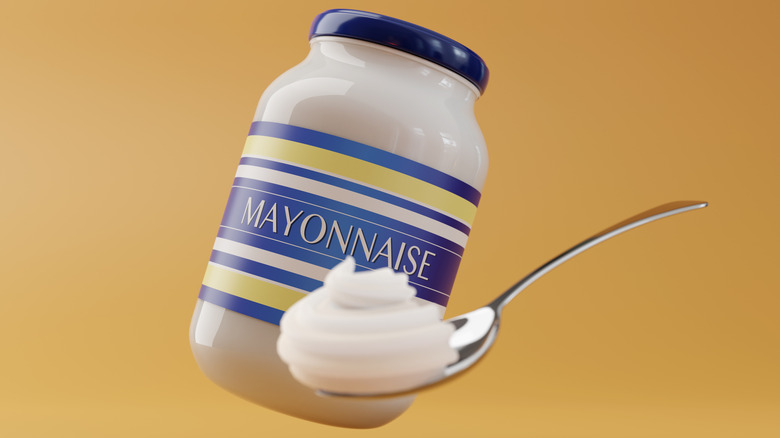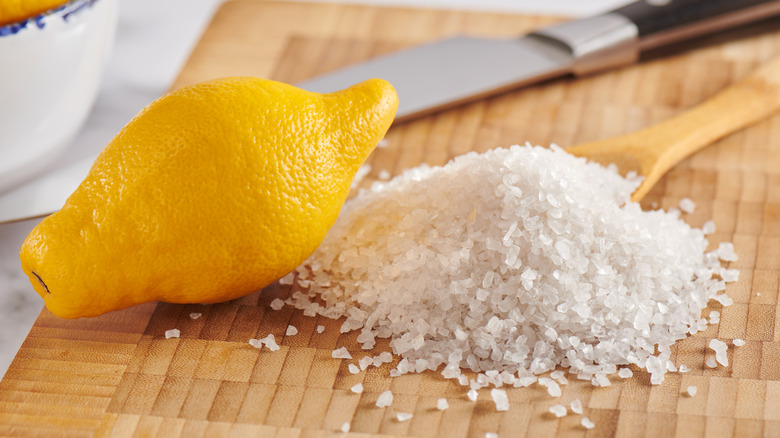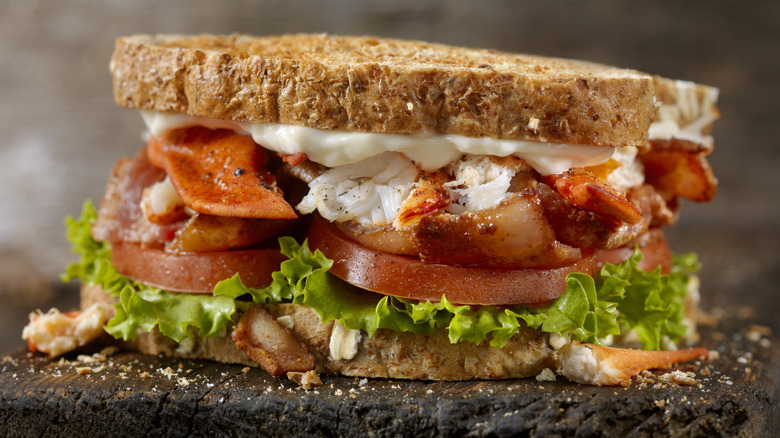The Simple Reason You Don't Have To Refrigerate Mayo Before Opening
Walking down the condiment aisle of the grocery store, you might have a hard time believing all these items are shelf stable. After all, the key to rich homemade mayonnaise is raw egg yolk. But the reality is, the store-bought stuff is perfectly fine sitting in the back of your pantry for months, as long as you haven't opened it.
That's because a powerful combination of acid and salt fights off bacteria. Manufacturers also rely on preservatives to ensure the sealed product is safe at room temperature. Once opened, the spread lasts another two months in the fridge (per the USDA).
That said, nothing stays fresh forever, so be sure to stick to the sell-by dates on your jar. If you notice a puncture, dent, or swelling, it's a good idea to toss the container as the food may be contaminated or spoiled. The same goes for food in the fridge after a long power outage — more than eight hours unrefrigerated and food and safety experts recommend that opened jars go in the trash (per FoodSafety.gov).
The power of acid and salt
The heavy lifter in mayo's ingredient list is acid. Brands usually employ a mix of lemon juice and vinegar to get the job done. This component helps slow the growth of unwanted bacteria, making it safer for you to eat and prolonging its shelf life. Aiding in this process is salt, which, in addition to making foods taste better, has a long history of preventing food spoilage by reducing its water content.
The cumulative effect of the acids, salt, and preservatives is so powerful that a 1977 study published in the Journal of Food Protection concluded that mayo could actually help protect other foods. Though the item hasn't shaken its mixed reputation, researchers were quick to defend its positive role in sandwiches and salads. That said, regardless of condiment use, refrigerate perishables like meats and cheeses after two hours (per the FDA).
In addition to tapping into age-old protectors, producers are also investigating new technologies to keep the spread safe. One idea in development in the U.K. is a temperature-sensitive food label that helps shoppers know when their refrigerator shelves reach an optimal chill. Though still in the trial phase, Hellmann's so-called smart mayonnaise jars could ultimately help combat waste by highlighting when fridges are too warm.
The best way to keep mayo fresh
While you can keep your backup jar in the fridge, it's not a necessary step to keep the flavor fresh. However, after you open a jar, make sure to use a clean utensil to scoop and spread the substance. Bread, meat, and other ingredients go bad at different rates; switching knives will help avoid cross-contamination and extend its life in the fridge.
You might be tempted to ask, should you freeze mayo? Though technically you can, this isn't the best tip to maximize the condiment. Instead, keep the emulsified item at its peak by buying smaller jars and using them up quickly.
The creamy ingredient is surprisingly useful outside of the picnic basket. The condiment's high-fat content and smoke point, as well as its spreadable texture, has won over home cooks and elevated its role in the kitchen. So slather your salmon in mayo, swap butter for mayo in garlic bread, and use it as an egg-wash alternative to make a dent in your supply.



